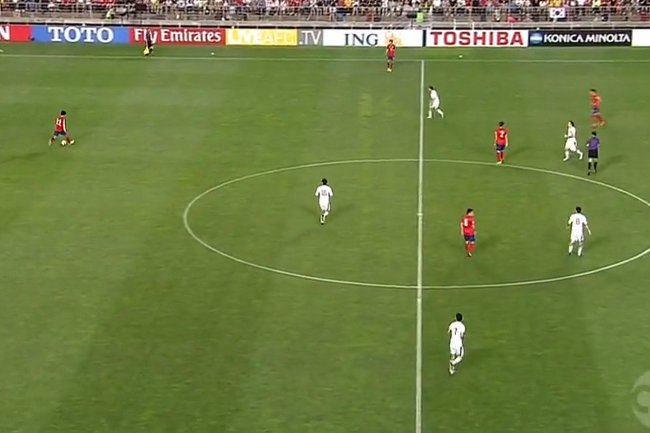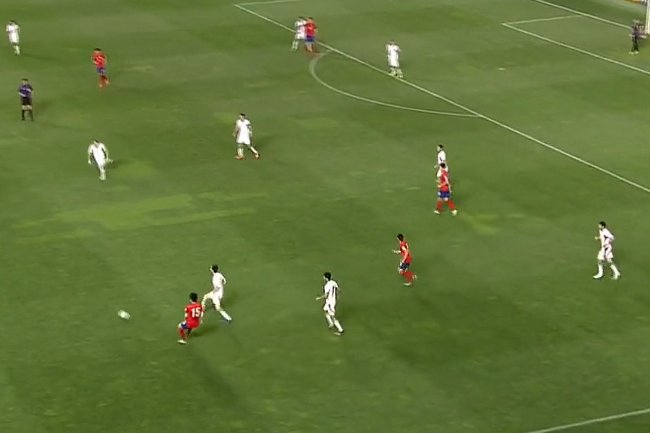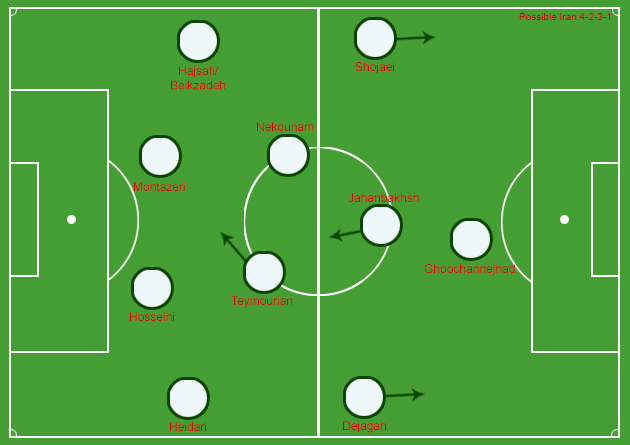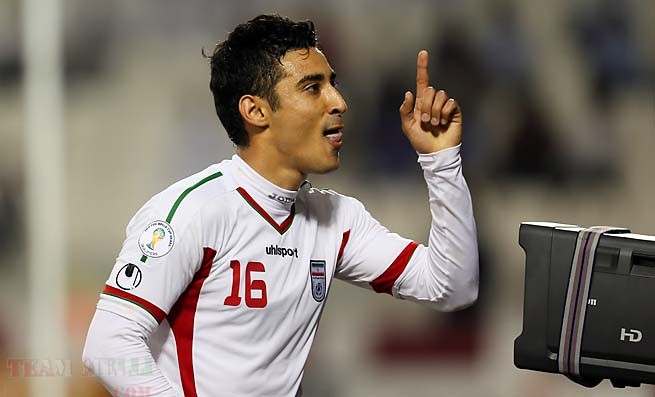Welcome to the latest edition of our World Cup tactics board, where we look at each nation that has qualified for the 2014 World Cup in Brazil.
This time around, we’ve studied minnows Iran, led by former Real Madrid and Manchester United stalwart Carlos Queiroz and spearheaded by Fulham attacker Ashkan Dejagah.
Qualifying
The Asian qualifying path to the World Cup is long and unforgiving; it crams many fixtures into a short amount of time, making for an early start and an early finish to proceedings.
Iran were the second Asian nation to seal their place in Brazil after Japan, topping Group A by two points and seeing off the challenge of South Korea (qualified in second) and Uzbekistan.
They lost just twice throughout the campaign and conceded just two goals in their final eight games. They struggled for goals too, scoring an average of just one per game in the final stage and winning most games 1-0.
Four of their players scored three goals during qualifying, though Reza Ghoochannejhad didn’t emerge as a starting option until late.
Formation and Style
Iran play the most defensive 4-2-3-1 formation you’ll see at the finals, with Queiroz preaching discipline, tracking and numbers at the back.
His back four are a genuine back four, with the full-backs only venturing forward for the odd attack and throw-ins. Out of possession, they’re as flat as can be, charged with man-marking the wingers and harassing midfield runners.

The Persian Stars are happy to sit off the ball when their opponents have it in their own half. Far removed from any form of high-press strategy, opposing centre-backs will have all the time in the world to pick a pass.
The problem is that there are no options, as Iran swamp out the midfield by switching into a deep 4-4-1-1 or 4-1-4-1 and man-mark all outlets. They barely encroach upon ballplayers to pressure and instead decide to present the opposition with no options.

With no one to pass to, SK hit it long. Again.
Inevitably, players get fed up and play longer, riskier passes. Here’s an example from a stifling 1-0 victory over South Korea that sums up the approach.
If the opposition are able to work it forward—via pass, overload or dribble—Iran become snappy and aggressive in hunting down the ball, treading the thin line between firm challenge and foul on a regular basis.
They’re often touch-tight and work incredibly hard to win the ball back, but once they have it, that’s where the problems start.
Offensively, they are stunted, and it doesn’t help when all they do going forward is pass it to Javad Nekounam and hope he can pick out a stunning, incisive long pass.
 AV
AV Nekounam will always look to the wings first and foremost to release a runner, and Masoud Shojaei has impressed on the left opposite Ashkan Dejagah with his hard running, opportunistic releases and enthusiasm.
Reza Ghoochannejhad has emerged as an opportunistic finisher, with nine goals in 11 international appearances, but how will he cope against the defences of Argentina, Bosnia and Herzegovina, and Nigeria?
Reasons for Hope
This Iran side is extremely well-drilled. Every player knows his job off the ball and has subscribed to Queiroz‘s way of thinking. He’s renowned as a defensive coach, which didn’t suit Portugal in 2010, but this is the ideal fit.
The defensive unit, led by Seyed Jalal Hosseini, looks settled and competent. Hosseini himself commands an organised back line and barks orders at his full-backs on a regular basis.
 B/R Tighe (@stighefootball)
B/R Tighe (@stighefootball) Andranik Teymourian, Nekounam‘s defensive midfield partner, is also more than handy and has experience—albeit very limited—in the Premier League.
Dejagah will give them an attacking edge often missing during qualifying, but he’ll be required to make his own chances and finish them himself. Nekounam will make the first pass, but beyond that, it’s up to him.
Mohammadreza Khalatbari is a wild-card substitution capable of winning a game, but he lacks consistency and lost his starting place over the last 12 months.
Reasons for Concern
Iranian fitness levels have always been doubted—a product of most players playing in the low-standard Iranian Pro League—and nothing we’ve seen in 2014 bucks that trend.
With the exception of Ghoochannejhad, Nekounam and Dejagah, you worry about the durability of this side over the course of 90 minutes against Lionel Messi, Edin Dzeko and Emmanuel Emenike.
Said fitness concerns aren’t exactly helped by the kick-and-rush approach taken by Queiroz and his men while attacking, and it’s no wonder they tire, as they rarely ever have the ball.
“Resting in possession,” a la Barcelona, doesn’t have to be taken too seriously by international teams, but the Persian Stars could do with adopting a little bit more patience on the ball. Quality, or a lack thereof, factors in here, of course.
Can Ghoochannejhad, Nekounam and Dejagah break down Argentina, Nigeria and BIH single-handedly? The honest answer, on paper, is no.
Conclusions and Predictions
You’d be mad to back Iran to get out of a very challenging Group F, but that doesn’t mean they’re a walkover.
They don’t scrabble around defensively and block shots with flailing legs a la North Korea in 2010; Queiroz has coached this team to the point that they’re positionally superb off the ball.
While they are expected to eventually yield, don’t expect landslide scorelines and a minus-10 goal difference at the end of the tournament.

